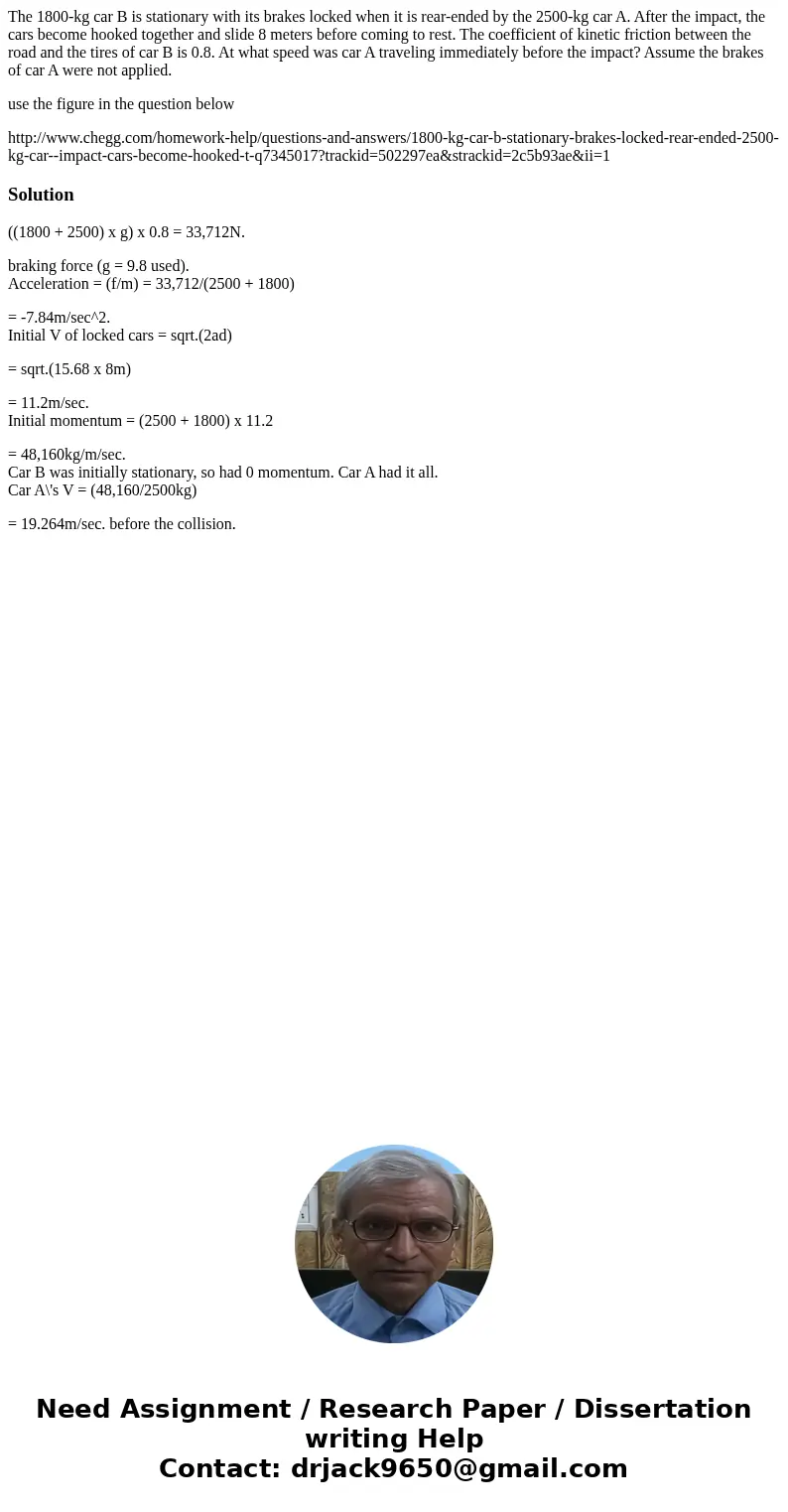The 1800kg car B is stationary with its brakes locked when i
The 1800-kg car B is stationary with its brakes locked when it is rear-ended by the 2500-kg car A. After the impact, the cars become hooked together and slide 8 meters before coming to rest. The coefficient of kinetic friction between the road and the tires of car B is 0.8. At what speed was car A traveling immediately before the impact? Assume the brakes of car A were not applied.
use the figure in the question below
http://www.chegg.com/homework-help/questions-and-answers/1800-kg-car-b-stationary-brakes-locked-rear-ended-2500-kg-car--impact-cars-become-hooked-t-q7345017?trackid=502297ea&strackid=2c5b93ae&ii=1
Solution
((1800 + 2500) x g) x 0.8 = 33,712N.
braking force (g = 9.8 used).
Acceleration = (f/m) = 33,712/(2500 + 1800)
= -7.84m/sec^2.
Initial V of locked cars = sqrt.(2ad)
= sqrt.(15.68 x 8m)
= 11.2m/sec.
Initial momentum = (2500 + 1800) x 11.2
= 48,160kg/m/sec.
Car B was initially stationary, so had 0 momentum. Car A had it all.
Car A\'s V = (48,160/2500kg)
= 19.264m/sec. before the collision.

 Homework Sourse
Homework Sourse